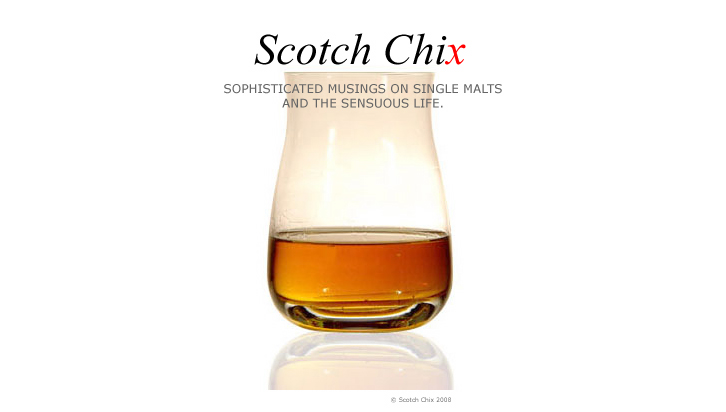A Scotch Chick stands at the front of a classroom in a little black suit, half glasses, and red stiletto heels.
Class, since we have been discussing American whiskey and bourbon recently, many of you have been requesting more information on the subject. Consequently, today we are going to present a Scotch Chix Primer to whisky, American whiskey, and bourbon.
First a note, the Scotch Chix are well aware that folks in the Middle East and Native Americans have an ancient history of distilling spirits, and we are in no way discrediting that history. We are also aware that whisky may have its origins in whiskey, which originated in Ireland, and that mainland Ireland is no longer part of the United Kingdom. Consequently, when we are making reference to the historic UK, we are talking about the pre-1921 arrangements. So, no politically correct ranting Loyal Scotch Chix Fan Mail, please.
On with the lecture. Whisky is related to American whiskey and bourbon in the same way that the US is generally related to the UK – they share a common history and common principals. Immigrants to the US from the UK brought the art of making whisky with them when they started populating the colonies in the 16th and 17th centuries. American whiskey and bourbon as they are crafted in the US are descendants of whisky and/or whiskey as it was crafted in the then United Kingdom: fermented grain mash is distilled and aged in wooden barrels.
Thus ends the similarity. All whisky contains barley in some quantity. Malt whisky is made with malted barley. The malting process is a very limited germination of the barley before it is ground, and this process is stopped when the the barley is dried out using fires. If peat is used in the fire, the smoke can add a distinct flavor to the whisky. Many of the casks used to age whisky may have once contained other spirits, such as wine, which also adds to the flavor.
Whisky must be distilled in Scotland, have a minimum maturation time of 3 years in Scotland, and be bottled at a minimum strength of 40 percent alcohol. Whisky can be categorized as either: single malt whisky (malt whisky made from a single distillery and aged at least 4 years), vatted malt whisky (a blend of single malts from different distilleries), grain whisky (whisky made from malted or unmalted barley and other cereals), or blended whisky (a blend of malt and grain whisky with a usual ratio of 40% malt to 60% grain).
American whiskey has as its foundation corn, rye or wheat. All American whiskey, except a special type designated as corn whiskey (at least 80% corn) must be aged in new oak barrels that have been charred on the inside. In addition, no smoke is used to dry the grains. Bourbon, which originated in Bourbon County, Kentucky, is distinguished from regular American whiskey in that has as its foundation at least 51 percent corn. It is aged in charred white oak barrels for at least two years. Tennessee whiskey is a type of bourbon that has been filtered through sugar maple charcoal. Rye whiskey contains more than 51 percent rye. If it is aged more than two years, it is known as "straight rye whiskey."
The difference in basic ingredients and in drying and aging process makes for a very different drink. While others believe American whiskey to be sweeter than Scottish whisky, the Scotch Chix disagree. Moreover, they miss the depth of flavor one gets from drinking a single malt whisky. The Scotch Chix also find American whiskey and bourbon to be a bit harsher than their Scottish cousins. As of now, the only candidate from the US that has made it to their drinks table has been Woodford Reserve bourbon. There has recently been a boom in fine aged bourbons in the United States, however, and the Scotch Chix think the topic deserves further inquiry.
Class dismissed.






No comments:
Post a Comment